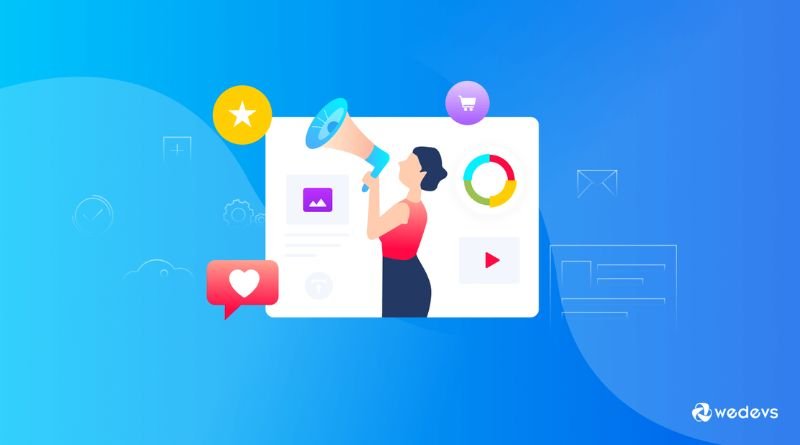Embracing Visual Content in Digital Marketing Trends
In today’s fast-paced digital landscape, capturing and retaining audience attention is becoming increasingly challenging for marketers. Amidst information overload, visual content has emerged as a powerful tool to break through the noise and make a lasting impression. From images and videos to infographics and memes, visual content is transforming the way brands engage with their audiences. This article explores the impact of visual content in digital marketing trends and provides actionable insights for marketers to optimize their strategies.
The Power of Visual Content in Marketing
Human brains are wired to process visual information more effectively than text, making visual content a potent vehicle for communication. According to research, 90% of the information transmitted to the brain is visual, and visuals are processed 60,000 times faster than text. Furthermore, studies have shown that people remember only about 10% of information they hear after three days, but when paired with a relevant image, retention increases to 65%.
Types of Visual Content in Digital Marketing
- Images: Images play a crucial role in capturing attention on various digital platforms. High-quality and visually appealing images enhance brand perception and help establish an emotional connection with the audience. They are widely used in website banners, social media posts, and email marketing campaigns. For example, Airbnb’s use of stunning images showcasing unique accommodations has significantly contributed to the success of their marketing efforts.
- Infographics: Infographics are an excellent way to convey complex data and statistics in a visually compelling manner. A study by HubSpot found that infographics were liked and shared on social media three times more than any other type of content. Brands like HubSpot and Moz regularly use infographics to simplify and explain complex topics in their industries.
- Videos: The rise of video marketing has been monumental in recent years, with brands leveraging the power of videos for storytelling, product demonstrations, and engaging social media campaigns. One such example is Dollar Shave Club, which gained viral success through a witty and engaging video that resonated with its target audience. To capitalize on this trend, marketers can explore various opportunities using a video editor to create compelling content. According to Cisco, video content is projected to account for 82% of all internet traffic by 2022.
- GIFs and Memes: GIFs and memes add humor and relatability to digital content, making it more shareable and relatable. Brands like Wendy’s and Old Spice have incorporated memes and GIFs into their social media marketing, leading to increased engagement and brand loyalty.
Incorporating Visuals in Social Media Marketing
Social media platforms thrive on visual content. Instagram and Pinterest are explicitly designed to showcase images and videos, while Twitter and Facebook posts with visuals receive significantly higher engagement. On Instagram, posts with at least one hashtag have 12.6% more engagement than those without, indicating the importance of using relevant visual content alongside hashtags.
Visuals for Website and Blog Optimization
Visuals are not only crucial for social media but also play a significant role in website and blog optimization. Compelling visuals not only enhance the overall user experience but also increase the time spent on the site, reducing bounce rates. Additionally, optimized images and graphics can contribute to better search engine rankings. According to Google, sites with visually rich pages are more likely to rank higher in search results.
Video Marketing: A Game-Changer
The dominance of video marketing is undeniable. Cisco’s Visual Networking Index predicts that video content will make up 82% of all internet traffic by 2022. Brands that incorporate videos in their marketing strategies witness higher engagement rates, increased conversion rates, and improved brand recall. Video platforms like YouTube and TikTok offer excellent opportunities for brands to reach vast audiences organically and through targeted advertising.
Infographics for Simplified Communication
The human brain processes visual information faster and more efficiently than textual data. Infographics combine data, statistics, and images to present complex information in an easily digestible and engaging format. For instance, healthcare brands use infographics to educate the public about diseases and symptoms, helping audiences better understand their health concerns.
Visuals and Email Marketing Campaigns
Email marketing remains one of the most effective channels for engaging with customers. Including visually appealing elements like images, GIFs, or interactive content in email campaigns can significantly increase open rates and click-through rates. A study by SuperOffice revealed that personalized and visually enriched emails receive 25% more clicks than standard text-based emails.
Measuring Visual Content Performance
To optimize visual content marketing, it is crucial to monitor its performance using relevant metrics. Key performance indicators (KPIs) such as click-through rates, conversion rates, and social media shares can provide valuable insights into the effectiveness of visual content. Tools like Google Analytics, social media analytics, and email marketing platforms offer robust tracking capabilities to gauge the performance of different visual content elements.
Future Trends in Visual Content Marketing
The visual content landscape is continually evolving. Several emerging trends are poised to shape the future of visual content marketing:
- Augmented Reality (AR) and Virtual Reality (VR): AR and VR technologies are becoming more accessible, allowing brands to create immersive and interactive experiences for their audiences. Brands like IKEA and Sephora are using AR apps that enable customers to visualize products in their homes before making a purchase.
- Artificial Intelligence (AI) in Personalization: AI-driven technologies enable brands to deliver personalized visual content to individual users based on their preferences, behavior, and demographics. Dynamic content and recommendation engines can enhance user experience and drive higher engagement.
Conclusion
As digital marketing continues to evolve, visual content remains a potent tool for engaging audiences and conveying brand messages effectively. By embracing various types of visual content and staying updated with emerging trends, marketers can elevate their digital strategies and stand out in the ever-competitive digital landscape. With the right blend of creativity, data-driven insights, and optimization, visual content will undoubtedly continue to shape the future of digital marketing. So, seize the opportunity, embrace the power of visuals, and let your brand story captivate the world.










